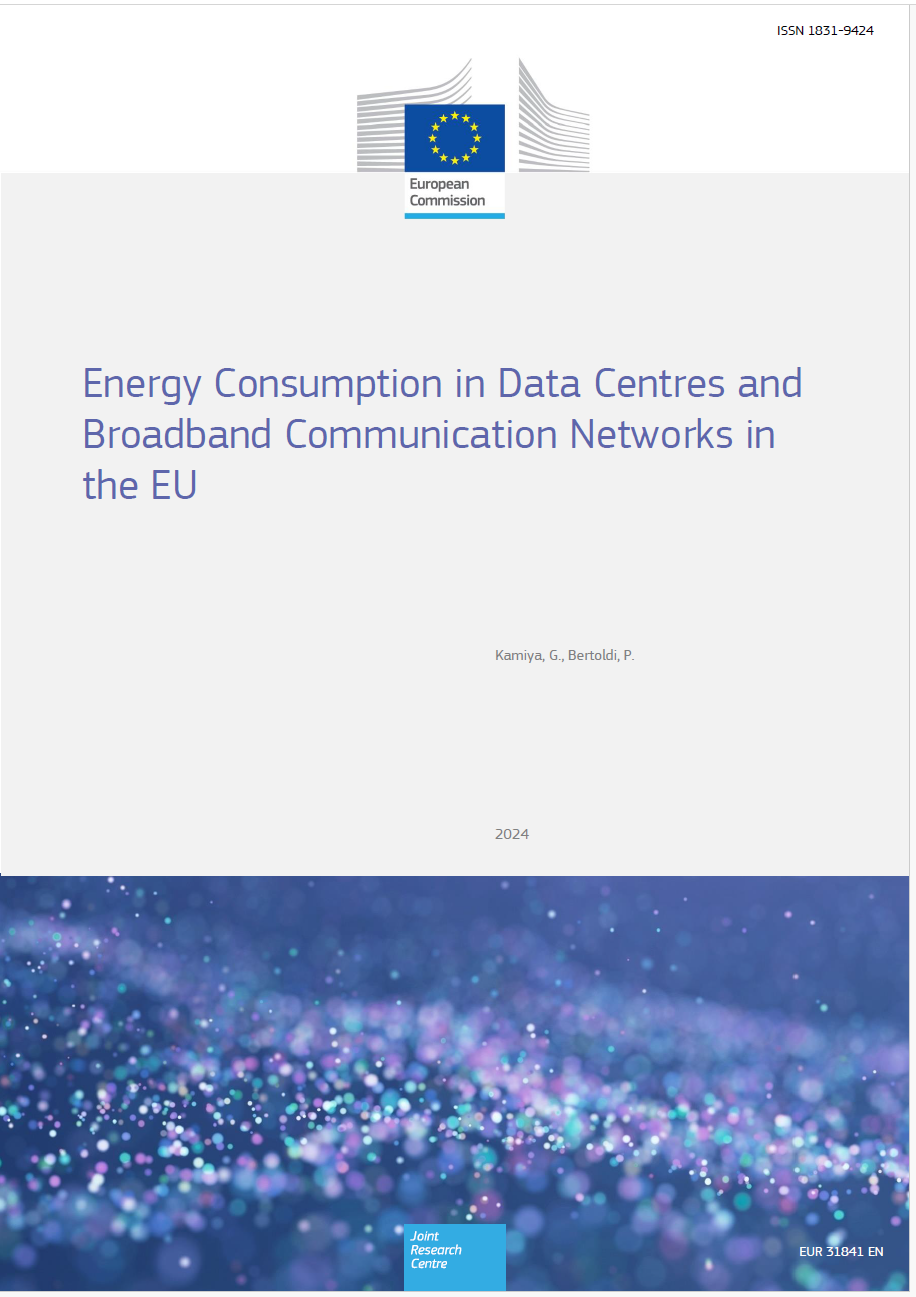Review of JRC report on energy consumption in data centres and broadband communication networks in the EU 2023
Rich Kenny | March 1, 2024

Review of JRC report on energy consumption in data centres and broadband communication networks in the EU 2023
Data Centre
EU estimates 45-65 TWh of electricity in 2022 (between 1.8-2.6% total energy). Colocation and Hyperscale account for 65% of the total. Enterprise the remaining 35%.
Top 4 markets:
- Germany (3% of total national energy)
- France (2.2% total national energy)
- Netherlands (5.2% total national energy)
- Ireland (18% total national energy)
These 4 account for almost 2/3 of the regions data centre use but have less than 40% of the population. The top 12 markets account for 95% of total use.
Telecommunications
Telecommunication networks use is between 25-30 TWh (1-1.2% of total energy). The 4 largest are also the largest users. Germany, France, Italy and Spain
These account for 58% of the total EU population and 65% of the regions telecoms energy use.
This gives an estimated total of 70-95 TWh or 2.8-3.8% total EU energy use.
Trends since 2015
Increase of DC workloads by 340% and internet traffic up 600% but total energy use has seen less growth due to increased efficiency in computation, storage and transmission.
Data quality and availability
The EU and International Energy Agency (IEA) collect data on many energy end-use sectors such as steel, lighting and transport but they don’t have official statistics on ICT.
All modelling approaches are flawed as all involve assumptions and estimates. A specific issue for data centres are that even the better ones such as the Bottom-up approach base power draw on a very limited data set.
Global estimates range from 200-1000 TWh but even removing outdated assumptions leaves global estimates between 200-380 TWh for 2020, excluding cryptocurrency. For 2023 the figure was presented as 460 TWh including AI and Cryptocurrency.
Previous studies have limited confidence parameters mainly due to lack of clear methodology and reliance on manufacturers specifications, which are often based on the power supply not the utilisation or configuration.
The 3 most recent reports published in 2020 on EU energy use have a variance of 39.5 TWh to 104 TWh. A 260% range mainly caused by different methodologies, data and assumptions.
Per country level data
Per country estimates across multiple methodologies seem to have a higher confidence interval but still wide variances on amounts presented. Often as much as 80% variance between high and low measures.
Some of these reports are based on reported electricity consumption, metering data and bottom-up estimates. They mainly focus on colocation and hyperscale.
Norway and UK also provided country level reports. Both of which provide much smaller variations on expected use. 0.7 TWh for Norway and between 4-7 TWh for the UK (representing around 1.3-2.5% of national energy use)
Estimates for China 150-200 TWh, USA at 73 TWh and Japan at 20 TWh.
Some interesting breakdowns on AI, Blockchain, Streaming / Gaming and 5G / IOT
- One study estimated 34 TWh for cloud gaming in 2016 in the USA – but has a variance of 10x so could be as low as 3.4 TWh
- Blockchain estimated consumption of 150 TWh in 2022 or 0.6% of global electricity use
- AI estimated to consume 0.2% of all global energy in 2022 but data is severely limited
Overall the report makes it clear that data, methodology and assumptions are not reliable so any measurements are either good or bad estimates. We need to be careful using these figures.
Notes on estimates and quality of data sets
Even the best data is still just energy use estimates with many baked in assumptions. Quite often the only data centre data, even in the best cases, are estimated from colocation and hyperscale data centres. Enterprise data centres are rarely included other than in some assumptive bottom-up methodologies.
Where energy estimates are not provided, or available, estimates have been based on installed IT capacity (which will be based on plate rating of equipment so could be 2-3x too high in some cases).
Of the 27 EU member states assessment quality of data rated as “Low” or “None” covers 17 of the countries. 4 are rated as “High” quality assessments and even these are severely limited in accuracy. These 4 “High” quality assessments do cover around 77% of data centre capacity however and almost half of the EU population so coverage provided by the better methods is good.
Telecommunication Networks
Data here is much higher quality and accuracy. Over 90% coming from operator data or government estimates. While unlikely to be exact it will be much more accurate and realistic. Publicly reported operator data accounted for 20 TWh which covered almost three quarters of the EU use. The published data is considered robust as its measured electricity data (except for Germany). It doesn’t include energy use from Diesel Generators but this is estimated to be less than 2% of total energy use.
Conclusions
- Telecommunications and data centre energy use estimated between 70-95 TWH or 2.8-3.8% total EU energy use.
- At country level the percentage of total energy used by data centre varies from 0.4% in Slovenia to 18% in Ireland. While Telecoms ranges from 0.5% to 1.5%.
- Severe lack of rigorous country-level data available
- Need clarity on definitions and classifications
- Cooperation between companies and governments to improve data quality and availability
- Government, companies and researchers need to work together to develop and standardise appropriate energy intensity indicators and metrics – eg energy intensity of mobile networks based on data traffic
- Future studies need to be clear on data sources, assumptions and methodologies in order to improve quality of analysis and provide consistent baselines
Full report is available on our resources section:
https://interactdc.com/resources/